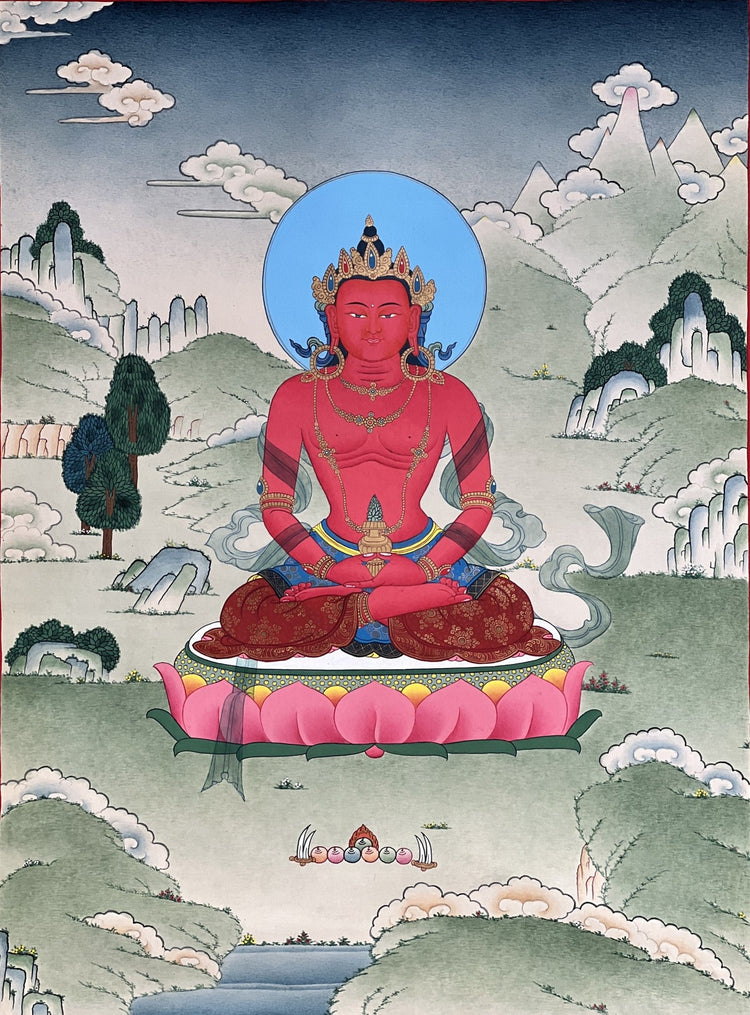Collection: God and Goddesses
Tibetan thangka paintings depict gods and goddesses who are significant figures in Buddhist iconography, representing different aspects of enlightenment, compassion, and wisdom. These divine beings are often illustrated in vibrant colors and intricate detail, surrounded by symbolic elements that communicate their attributes and significance. Each deity carries specific symbolism and represents different aspects of the Buddhist path towards liberation.
In Tibetan Buddhism, the gods and goddesses are considered enlightened beings who have achieved various levels of realization and serve as sources of inspiration and guidance for practitioners. They are depicted in different forms and poses, each carrying unique attributes and characteristics. Some commonly depicted deities include Buddha Shakyamuni, Chenrezig (Avalokiteshvara), Green Tara, Manjushri, and Vajrapani.
These deities are often surrounded by symbolic elements such as lotus flowers, flames, and celestial beings, each carrying layers of meaning and significance within Buddhist teachings. For instance, Chenrezig, the embodiment of compassion, is often depicted with multiple arms and eyes, symbolizing his boundless compassion for all sentient beings.
Tibetan thangka paintings serve as visual aids for meditation and contemplation. They allow practitioners to connect with the divine qualities represented by these sacred beings and cultivate compassion, wisdom, and inner peace in their spiritual journeys.
In Tibetan Buddhism, the gods and goddesses are considered enlightened beings who have achieved various levels of realization and serve as sources of inspiration and guidance for practitioners. They are depicted in different forms and poses, each carrying unique attributes and characteristics. Some commonly depicted deities include Buddha Shakyamuni, Chenrezig (Avalokiteshvara), Green Tara, Manjushri, and Vajrapani.
These deities are often surrounded by symbolic elements such as lotus flowers, flames, and celestial beings, each carrying layers of meaning and significance within Buddhist teachings. For instance, Chenrezig, the embodiment of compassion, is often depicted with multiple arms and eyes, symbolizing his boundless compassion for all sentient beings.
Tibetan thangka paintings serve as visual aids for meditation and contemplation. They allow practitioners to connect with the divine qualities represented by these sacred beings and cultivate compassion, wisdom, and inner peace in their spiritual journeys.

